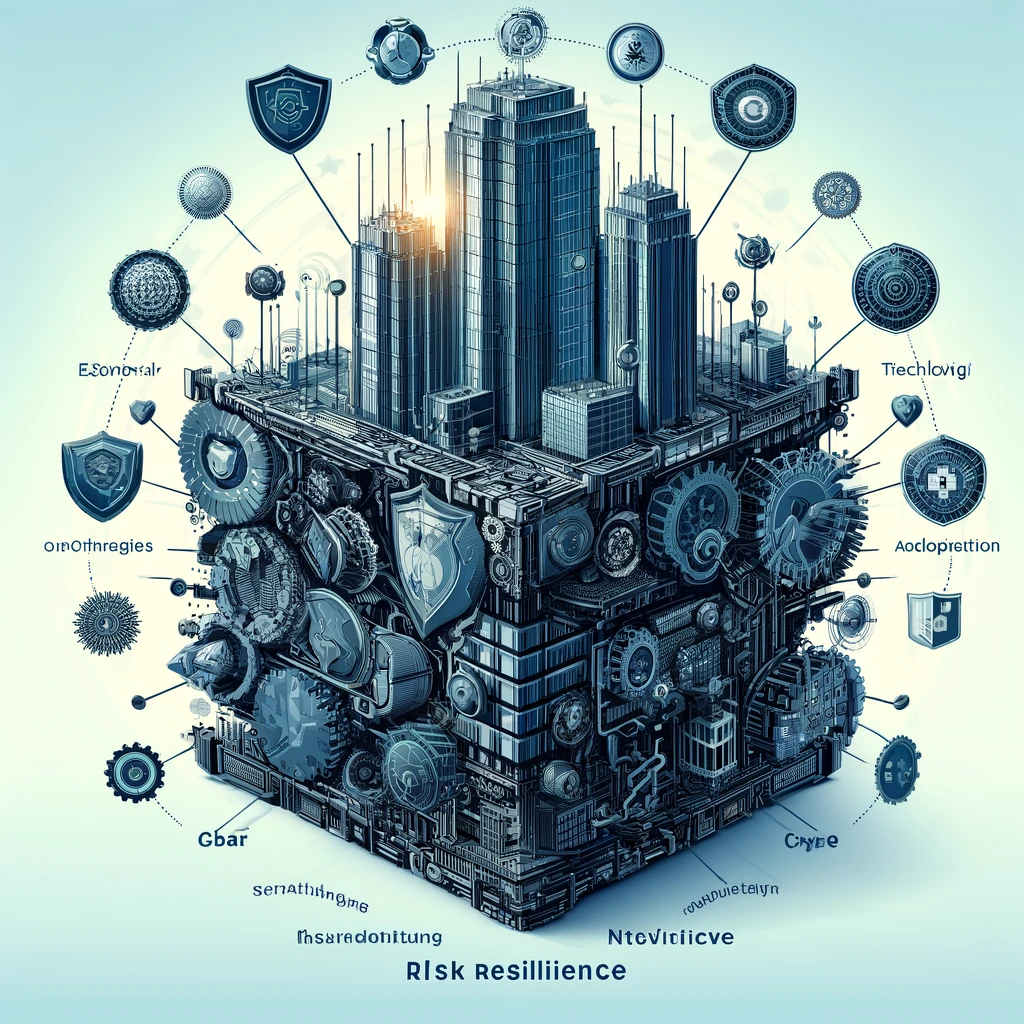
Risk Resilience: Architectural Foundations for Uncertainty.
In today’s rapidly changing business environment, characterized by technological advancements, global interconnectedness, and unforeseeable challenges, the ability to manage risk effectively has become paramount for organizational success. This necessity has brought into focus the role of business architecture in enhancing risk resilience. By systematically identifying, assessing, and strategizing around potential threats, business architecture provides a robust framework to prepare organizations for uncertainties, ensuring they can minimize risks and maintain continuity even in the most volatile situations. Let’s dive into how business architecture underpins risk resilience, offering insights into the methodologies and strategies that enable organizations to thrive amidst uncertainty.
The Interplay Between Business Architecture and Risk Management
Business architecture, with its holistic view of organizational structure, processes, and strategies, plays a critical role in risk management. It offers a structured approach to understanding the intricacies of how different parts of an organization interact and how external factors may impact these relationships. By doing so, it allows businesses to anticipate, prepare for, and mitigate risks more effectively. The interplay between business architecture and risk management manifests in several key areas:
- Strategic Alignment: Ensuring that risk management strategies are aligned with overall business objectives and strategies, thereby enhancing decision-making and resource allocation.
- Process Optimization: Identifying and mitigating inefficiencies within business processes that may pose risks to operational performance or compliance.
- Technology Integration: Assessing and mitigating risks associated with the use of technology, ensuring that IT systems and data are secure and resilient.
- Regulatory Compliance: Aligning business operations with legal and regulatory requirements to avoid fines, penalties, and reputational damage.
- Change Management: Facilitating adaptive change management processes that enable organizations to respond swiftly to emerging risks and opportunities.
Methodologies for Building Risk Resilience
Building risk resilience through business architecture involves several methodologies, each focusing on different aspects of risk management:
- Risk Identification and Assessment: Utilizing tools like SWOT analysis (Strengths, Weaknesses, Opportunities, Threats) and PESTLE analysis (Political, Economic, Social, Technological, Legal, Environmental) to identify and assess potential risks at both macro and micro levels.
- Scenario Planning: Develop various scenarios to anticipate potential future risks and prepare strategies to address these risks proactively.
- Business Impact Analysis (BIA): Evaluating the potential impact of identified risks on business operations, helping prioritize risk management efforts based on the severity of impact.
- Risk Mitigation Strategies: Designing strategies to either avoid, transfer, mitigate, or accept risks, depending on their nature and impact.
- Continuous Monitoring and Review: Establishing mechanisms for ongoing monitoring of the risk landscape and reviewing the effectiveness of risk management strategies.
The Role of Technology in Enhancing Risk Resilience
Advancements in technology play a significant role in enhancing an organization’s risk resilience. Business architecture leverages technology in several ways:
- Data Analytics and AI: Utilizing big data analytics and artificial intelligence to predict potential risks and identify trends that could affect the business.
- Cloud Computing: Adopting cloud services for greater flexibility and scalability, reducing the risk of data loss and ensuring business continuity.
- Cybersecurity Measures: Implementing advanced cybersecurity measures to protect against data breaches, cyberattacks, and other digital threats.
- Digital Twins: Creating digital twins of physical assets or systems to simulate different risk scenarios and assess potential impacts.
Challenges and Solutions in Building Risk-Resilient Architectures
Building a risk-resilient architecture is not without its challenges. Key obstacles include rapidly evolving risk landscapes, complexity in integrating risk management with business strategies, and resistance to change within organizations. Solutions to these challenges involve:
- Leadership and Culture: Cultivating a risk-aware culture led by committed leadership that prioritizes and supports risk management efforts.
- Stakeholder Engagement: Engaging stakeholders across all levels of the organization in risk management processes to ensure buy-in and compliance.
- Agility and Flexibility: Designing business architectures that are inherently agile and flexible, allowing for quick adaptation to new risks and circumstances.
- Education and Training: Providing ongoing education and training for employees to recognize and respond to risks effectively.
Architecting for Uncertainty
Business architecture offers a critical foundation for building risk resilience in an era of uncertainty. By aligning risk management strategies with business objectives, optimizing processes, leveraging technology, and fostering a risk-aware culture, organizations can navigate the complexities of the modern business landscape with confidence. Through proactive and strategic risk management, businesses not only safeguard their operations but also seize opportunities for innovation and growth, turning potential threats into avenues for competitive advantage.



